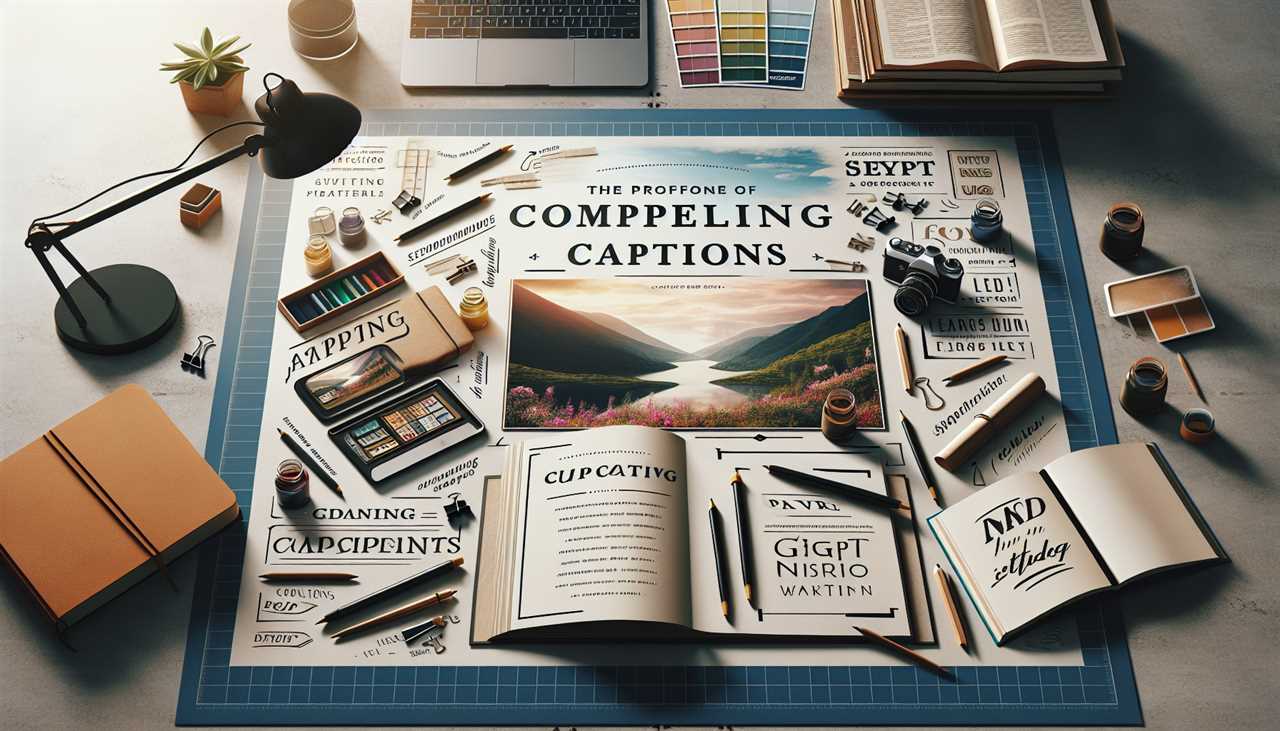Entertainment
Crafting Compelling Captions: The Art of Subtitles, Descriptions, and Taglines
Captions are pivotal in content creation, serving as attention-grabbers and providing context. They enhance accessibility, especially for video content, by

Listen to the Summary
The Power of Captions in Content Creation
We live in a world where content is king, and captions are the crown jewels. These short, snappy pieces of text have the power to grab attention, convey meaning, and entice viewers to engage with our content. Whether we’re talking about subtitles, descriptions, taglines, annotations, overlays, or summaries, the art of crafting compelling captions is a skill that can set our content apart from the rest.
Understanding the Role of Captions
Captions serve multiple purposes in content creation. They provide context, clarify information, and make our content more accessible to a wider audience. For video content, subtitles not only help those who are hard of hearing but also allow viewers to consume content without sound – a common practice in today’s mobile-first world.
Descriptions, on the other hand, give a brief overview of what the content is about. They’re often the first thing potential viewers see, so they need to be engaging and informative. Taglines are short, memorable phrases that encapsulate the essence of a brand or piece of content. They’re the hooks that can reel in an audience and make them want to learn more.
The Art of Crafting Compelling Subtitles
Subtitles are more than just a transcription of spoken words. They’re an opportunity to enhance the viewing experience. When creating subtitles, we need to consider timing, readability, and accuracy.
Good subtitles should appear in sync with the audio, be easy to read, and accurately convey the spoken content. But great subtitles go a step further. They capture the tone and nuance of the speech, including elements like emphasis and emotion. They might even include descriptions of relevant non-speech audio to provide a fuller experience for viewers who can’t hear the audio.
Creating Captivating Descriptions
A well-crafted description can be the difference between a viewer clicking on our content or scrolling past. The key to a good description is to be concise yet informative. We want to give enough information to pique interest without giving away everything.
Here are some tips for creating effective descriptions:
1. Start with a hook – an intriguing fact or question that grabs attention.
2. Highlight the unique aspects of our content.
3. Use keywords naturally to improve searchability.
4. Keep it short and sweet – most platforms have character limits for descriptions.
The Power of Taglines
Taglines are the distilled essence of our brand or content. They’re short, memorable, and pack a punch. A good tagline should be:
1. Unique to our brand or content
2. Easy to remember
3. Positive in tone
4. Reflective of our brand values
Some of the most successful taglines in history are just a few words long, but they’ve become synonymous with their brands. Think “Just Do It” or “I’m Lovin’ It”. These taglines are simple, but they encapsulate the brand’s essence and stick in people’s minds.
Maximizing the Impact of Annotations and Overlays
Annotations and overlays are visual captions that appear directly on our content. They can be used to add extra information, highlight key points, or direct viewers to related content.
When using annotations and overlays, we need to consider:
1. Placement – they shouldn’t obstruct important visual elements
2. Timing – they should appear long enough to be read but not so long they become annoying
3. Design – they should be visually appealing and in line with our overall aesthetic
4. Content – they should add value, not just repeat what’s already being said or shown
The Art of Crafting Summaries
Summaries are condensed versions of our content that give viewers a quick overview. They’re particularly useful for longer form content like articles or videos. A good summary should:
1. Highlight the main points of the content
2. Be concise and easy to read
3. Entice the viewer to engage with the full content
4. Include relevant keywords for searchability
Putting It All Together: A Holistic Approach to Captions
While each type of caption serves a specific purpose, they all work together to create a cohesive content experience. Our subtitles, descriptions, taglines, annotations, overlays, and summaries should all align with our brand voice and content goals.
For example, if we’re creating a cooking video, our subtitles might include descriptions of sizzling sounds or the aroma of spices. Our description could highlight the unique twist we’re putting on a classic recipe. The tagline might be a play on words related to the dish. Annotations could point out specific techniques or ingredients, while the summary gives a quick overview of the recipe and why it’s special.
The Impact of Captions on SEO
Captions don’t just improve the user experience – they can also boost our SEO efforts. Search engines can read text in captions, subtitles, and descriptions, which means we can use them to include relevant keywords and improve our content’s searchability.
However, it’s important to use keywords naturally. Stuffing our captions with keywords can make them difficult to read and may even be penalized by search engines. Instead, we should focus on creating high-quality, relevant captions that naturally incorporate our target keywords.
Testing and Refining Our Captions
Like all aspects of content creation, crafting compelling captions is an iterative process. We should regularly analyze the performance of our captions and make adjustments based on what we learn.
Some metrics we might consider include:
1. View-through rate for videos (are people watching to the end?)
2. Click-through rate for descriptions and summaries
3. Engagement rates for content with different types of annotations or overlays
4. Brand recall for different taglines
By continually refining our approach, we can create captions that not only enhance our content but also drive engagement and improve our overall content performance.
Conclusion: The Art and Science of Captions
Crafting compelling captions is both an art and a science. It requires creativity to come up with engaging, memorable text, and analytical skills to optimize that text for search engines and user engagement. By mastering the various types of captions – from subtitles and descriptions to taglines and annotations – we can create a richer, more engaging content experience for our audience. And in today’s competitive content landscape, that can make all the difference.

Hey there! I’m William Cooper, your go-to guy for all things travel at iMagazineDaily. I’m 39, living the dream in Oshkosh, WI, and I can’t get enough of exploring every corner of this amazing world. I’ve got this awesome gig where I blog about my travel escapades, and let me tell you, it’s never a dull moment! When I’m not busy typing away or editing some cool content, I’m out there in the city, living it up and tasting every crazy delicious thing I can find. Join me on this wild ride of adventures and stories, right here at iMagazineDaily. Trust me, it’s going to be a blast! 🌍✈️🍴








You must be logged in to post a comment Login